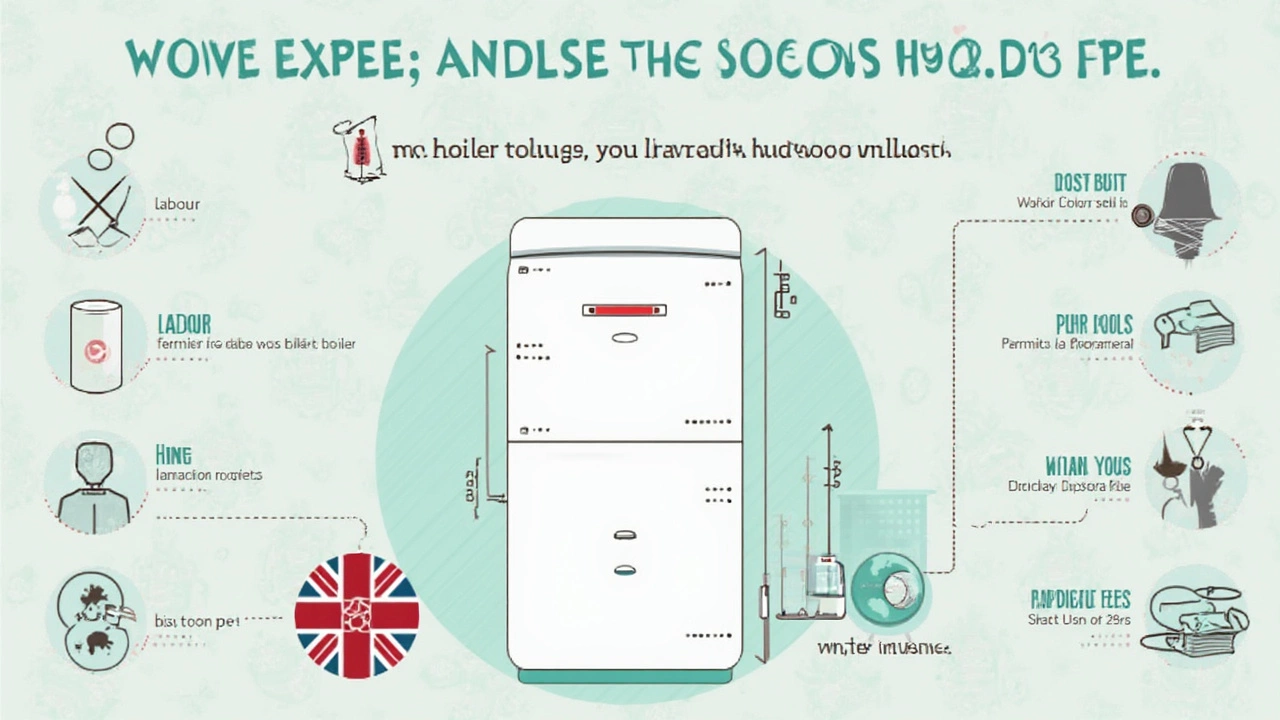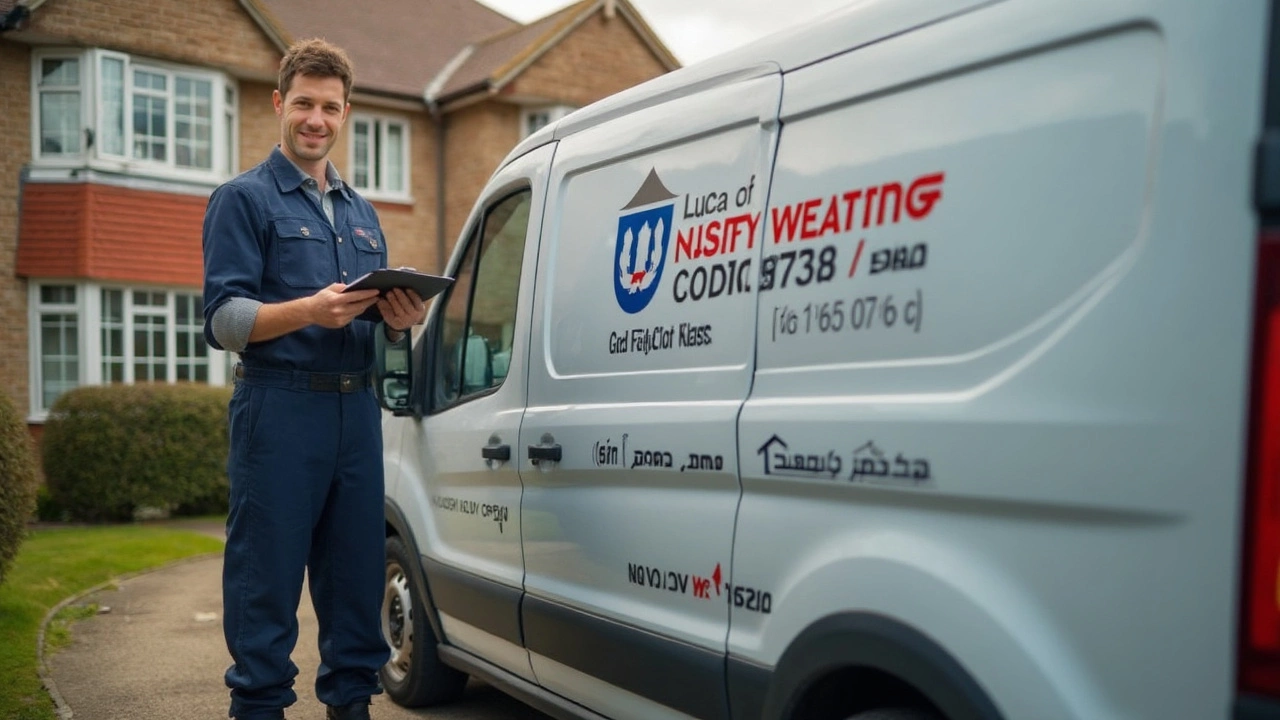If you've started looking into boiler replacement, you probably noticed the price tag can feel like a gut punch. It's not just the cost of the box itself—lots of people are shocked when the full quote arrives.
Most of the cost comes down to what's going on behind the scenes. You're not just paying for the unit; there’s labor, extra materials, safety checks, and sometimes, a maze of permits. Even small homes can rack up bills when you factor in the steps needed to safely hook up a brand new heater.
For example, the labor alone can be half the final cost. Big job? More hours. Tiny, tucked-away boiler room? That means more work pulling out the old one and putting the new one in place. And if your house has old plumbing or wiring, expect the price to climb higher as new parts and extra fixes get added to the list.
- Breaking Down the Costs
- The Price of Professional Labor
- Parts, Permits, and Hidden Extras
- Old Boilers vs. New Tech: What Changes?
- Ways to Save On Your Next Boiler
Breaking Down the Costs
Boiler replacement isn’t just a one-line item on your bill—there are a bunch of different things piled together. First off, the boiler replacement unit itself is a big chunk. Good models typically range from $2,000 to $5,000, and that’s before you even pay someone to touch it. The bigger your house or the fancier the tech inside, the more you’re going to shell out.
Next up is installation. Labor can easily run $1,500 to $4,000 depending on how tricky your setup is. Complex pipework, tight spaces, and shifting the boiler to a new spot—these all push that number higher and fast. If you’ve ever heard horror stories of jobs spilling into a second or even third day, this is why.
Don’t forget the extras. Add-on costs fly in for:
- Upgrading old pipes or fittings to match new safety rules
- Hauling away your old, heavy boiler (some charge $200+ just to dispose of it)
- Permits or inspections, which cities everywhere want—expect $50 to $300 depending on where you live
- New thermostats or controls, which are often required by today’s high-efficiency units
Hidden fees can pop up too. Maybe your wiring isn’t up to code, or your vent system needs swapping. Those fixes can mean another $500, sometimes more.
This isn’t just about trying to squeeze money out of you—it’s about getting the job done right and safely. Some shortcuts could lead to big issues down the road, both with your comfort and your insurance. So every line on that invoice usually has a reason, even if it feels steep. Knowing where the money’s going helps keep surprises to a minimum.
The Price of Professional Labor
This is where the numbers really start to add up. A big chunk of the overall boiler replacement bill comes from the professionals you hire. We're not just talking about a simple one-hour service call. Swapping out a boiler can take a trained crew anywhere from one full day to several, especially if your setup is tricky.
Heating engineers need special training and certification, and in the UK, for example, anyone installing a boiler must be Gas Safe registered. In the US, they need similar licensing, plus experience handling combustion systems safely. These aren’t quick online certificates—training hours, apprenticeship, and real-world experience all push up labor rates.
Let’s get specific. As of 2025, the average hourly rate for a certified boiler technician in major US cities falls between $85 and $150 an hour. In the UK, expect £60 to £120 per hour. The final cost depends on the contractor’s experience, your location, and how busy they are (peak winter season, for example, costs more).
There’s more, too. It’s rarely just one tech on the job. A team often handles removal, setup, and the critical safety checks. Some firms include a project manager fee, especially for bigger, older houses or commercial jobs. Here’s a quick look at typical labor charges for a mid-size home boiler in 2025:
| Task | Time (Hours) | Average Cost |
|---|---|---|
| Remove Old Boiler | 2-4 | $200-$600 |
| Install New Boiler | 4-8 | $400-$1,200 |
| Safety Checks & Testing | 1-2 | $100-$300 |
| Disposal & Cleanup | 0.5-1 | $50-$150 |
That doesn’t even count extras, like changing gas lines, rerouting pipes, or after-hours emergency work. If your new boiler is a different size or type (say, you’re switching to a combi system), labor gets more complicated—sometimes double what you’d pay for a straight swap.
Here’s a tip: always ask for a breakdown on your quote. Good installers will list labor separately, explaining the cost for removal, installation, testing, and even travel. If you see a hefty fee and just “labor” with no details, push for more info. Clear breakdowns help you spot savings—and avoid paying for stuff you don’t actually need.

Parts, Permits, and Hidden Extras
This is where folks really get blindsided. When a contractor sends you a quote for a new boiler replacement, it’s not just about the boiler itself. There’s a stack of small, but critical, extras that pile onto the bill.
First up, let’s talk parts. Besides the main unit, you’ll need connecting pipes, valves, thermostats, pressure regulators, and sometimes a new flue or chimney liner. Each one comes with its own price tag. If your place is older and the pipework isn’t up to code, be ready to pay for upgrades — that alone can push costs way higher than expected.
Permits are another wallet-squeezer. Most local governments (including in the UK and the US) won’t let you install a new boiler without an approved permit. It sounds like red tape, but there’s a reason behind it—safety. Plumbing codes get updated, and if your setup isn’t compliant, someone could get hurt. Permit fees aren’t huge by themselves, but inspection fees and mandatory safety tests can stack up. In some cities, these can add $300 or more to the final cost.
Then come the "hidden" extras, the stuff no one mentions when you’re budgeting. For instance, removal and disposal of the old boiler usually aren’t included in the first price. There can also be surprise charges for wall repairs or replacing outdated wiring. And, if your old system was leaking water or gas, fixing those messes is extra, too.
As heating engineer Paul Downes told BBC Homes: "Some homeowners get the shock of their lives when they see the extras—because a lot of houses need upgrades that just weren't needed twenty years ago."
If you want to be prepared, always ask for a fully itemized quote that covers all these bits and pieces before you sign anything. If your installer is cagey about the details, treat that as a red flag.
Old Boilers vs. New Tech: What Changes?
Swapping out an ancient boiler for the latest tech isn’t a simple swap. Half the time, it’s about fitting a square peg into a round hole. Older boilers are like those clunky cassette players—big, heavy, and made with old rules in mind. New systems have stepped up. They're packed with sensors, digital controls, and smart features. That’s a leap, not a baby step.
Let’s get clear about the facts: modern boilers are much more energy-efficient than the dinosaurs hiding in old basements. The UK’s Energy Saving Trust points out that replacing a G-rated boiler with a new A-rated condensing model could save a household hundreds of pounds every year. That’s real money back in your pocket, but it comes with a catch. The upgrade isn’t just plug-and-play. Pipework may need changing. You might have to upgrade radiators, add new flue systems, or even beef up your electrical setup to handle all that new tech.
Here’s a quick comparison of what changes:
- Boiler replacement often needs new, thicker pipes to deal with higher efficiency and pressure.
- Modern boilers use smart thermostats and sometimes even smartphone apps for control. If your wiring is old, you’ll need upgrades.
- Condensing boilers need a drainage system for the condensation they produce—older homes rarely have this built in, which means extra work.
Steve Barker, an installer with 20 years in the field, puts it directly:
“People expect a new boiler to just drop in, but the truth is, with all the safety rules and extra tech, it can mean changing half your system. The boiler isn’t just a box—it talks to everything else in the house now.”
The takeaway? If your old system is stuck in the last century, you’re not just buying a new unit. You’re paying for your whole heating world to catch up to today’s standards and smart features. That change doesn’t come cheap—but it’s all about running safer, cleaner, and cheaper in the long run.

Ways to Save On Your Next Boiler
Boiler replacement isn’t ever cheap, but you’ve got options that can shave hundreds—sometimes even thousands—off the final bill. It’s all about being smart with your choices and not falling for the first quote that lands in your inbox.
First up: always get multiple quotes. Don’t stick to just one installer. Try at least three. You’d be surprised—prices for the same job can swing by up to 30%. And don’t just look at the price itself. Ask what’s included (warranty, aftercare, parts) because cheapest isn’t always best if it means coughing up later for what should’ve been standard.
The next tip: keep an eye out for local or government incentives. Schemes in places like the UK and certain U.S. states change regularly and can chop off as much as $1,000–$3,000 if you choose a high-efficiency model. Utility companies sometimes offer rebates too, especially for switching to energy-saving boilers.
If your current setup allows, boiler replacement with a model similar in size and style can help avoid extra plumbing or wiring upgrades—those changes add up fast. If you’re not tied to a specific brand, some lesser-known makes offer just as much reliability but carry a lower cost. Don’t let a fancy brand name eat into your savings.
Here’s a quick table showing what affects boiler cost the most and where you have wiggle room:
| Cost Factor | Percent of Total | How to Save |
|---|---|---|
| Unit price | 40-50% | Pick mid-range or consider off-brand |
| Labor/Installation | 30-40% | Get multiple bids, schedule offseason |
| Extras (controls, thermostats) | 5-10% | Buy separately if cheaper |
| Permits/Inspections | 5-10% | Ask for breakdown to spot markups |
Don’t forget timing. Boiler installers are slammed in late fall and the deep winter. Tackle the job in late spring or summer, and you might get a lower rate simply because the crew’s less busy.
- Always check if your installer has in-house financing or payment plans—sometimes these are more flexible and cheaper than third-party loans.
- Keep up with yearly boiler servicing. If you maintain your system, you’ll squeeze more life out of it and delay that big-spend replacement.
Lastly, double check that your installer is properly certified. A subpar install can cost you more in repairs—and no one wants to pay for the same job twice.

I am an expert in the services industry with a focus on appliance repair. My passion lies in understanding how things work and educating others in simple, engaging ways. This enthusiasm fuels my writing, where I delve into topics around appliance maintenance and troubleshooting. I aim to make these subjects clear and accessible to all readers.